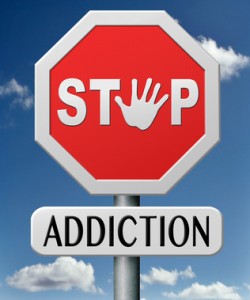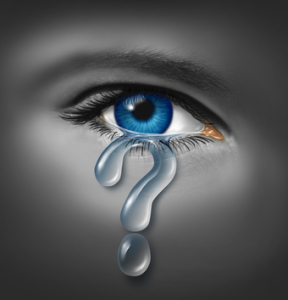The Quest for Psychiatric Dragons, Part 2
The fallout from the Rosenhan study couldn’t have come at a worse time for psychiatry. Spitzer was in the midst of trying to put out one fire because of the crisis brought about by gay activism against the APA. Then Rosenhan demonstrated that “psychiatrists could not distinguish the sane from the insane” from another angle.
Pseudopatients were admitted into psychiatric hospitals, but were not identified as fake patients by hospital staff. The problem with the unreliability of psychiatric diagnosis was now front-page news, just as Spitzer and one of the coauthors of his 1967 article on the kappa statistic, Joseph Fleiss, were about to publish their own critique of psychiatric diagnosis. Their study, “A Reanalysis of the Reliability of Psychiatric Diagnosis,” became another classic article in the psychiatric literature.
The Spitzer and Fleiss study was received by the British Journal of Psychiatry on January 17, 1974, and published in the October 1974 issue of the BJP. The Spitzer and Fleiss article was received by the BJP about a month after the APA decision to remove homosexuality from the DSM-II and a year after the Rosenhan study was published.
Applying the kappa statistic in the re-analysis of five previous studies of diagnostic reliability, Spitzer and Fleiss said: “The reliability of psychiatric diagnosis as it has been practiced since at least the late 1950s is not good.” They were confident that developing structured interviews and specifying all diagnostic criteria “will result not only in improved reliability, but in improved validity, which is, after all our ultimate goal.” In The Selling of DSM, Stuart Kirk and Herb Kutchins said: “This article carefully and dramatically sets the stage for DSM-III. It reinterprets and denigrates the past, refers to innovations being currently developed by the authors and others, and predicts success in the future.”
The historical context suggests to me that the one-two punch of the gay activists and the Rosenhan study caught Spitzer and the other psychiatric researchers by surprise. These two events not only raised questions about the unreliability of psychiatric diagnosis, but they did it in a way that was easy to grasp by the public. They also publicly embarrassed psychiatry. How could trained psychiatrists not be able to tell whether someone was faking their symptoms? How could homosexuality be voted out of being a mental disorder? What implications do these two events have for diagnosing other so-called mental disorders?
Psychiatry now faced serious threats to its credibility, perhaps to its very existence. As Whitaker and Cosgrove noted in Psychiatry Under the Influence, the APA did recognize how the rampant criticism threatened their profession. “The public did not have a ‘strong conception of psychiatry as a medical specialty,’ and failed ‘to recognize a psychiatrist’s special competence in mental health care.’”
After his achievements in removing homosexuality from the DSM-II, and being appointed the chair for the DSM-III, Spitzer took on Rosenhan. Spitzer published his critique of Rosenhan’s study in the Journal of Abnormal Psychiatry in October of 1975, “On Pseudoscience in Science, Logic in Remission, and Psychiatric Diagnosis.” Spitzer’s article was originally received on November 1, 1974, less than a month after he and Fleiss published their article. He revised and resubmitted it on April 14, 1975. Several other articles on Rosenhan’s study were published in the same issue of the Journal of Abnormal Psychiatry. Spitzer now defended psychiatry and to a certain extent, diagnosis. Kirk and Kutchins noted that Spitzer was in the awkward position of defending psychiatric diagnosis, while he was in the process of restructuring it.
His rhetoric was clever and forceful. He characterized Rosenhan’s study as “pseudoscience,” playing to Rosenhan’s reference to his “pseudopatients.” Spitzer also referred to Rosenhan’s discussion of the pseudopatients discharge diagnosis as schizophrenia in remission as “logic in remission.” Kirk and Kutchins said:
Some of Spitzer’s criticisms of the design of the study were warranted, although his zeal to discredit Rosenhan sometimes led him simply to disregard or distort basic observations. . . . The importance of Spitzer’s comments are not what they tell us about Rosenhan’s study, but what they tell us about Spitzer’s new enterprise, the making of the DSM-III.
First he sought to invalidate Rosenhan’s basic point, namely the criticism of psychiatric practices that could not distinguish the sane from the insane. According to Spitzer, “A correct interpretation of [Rosenhan’s] own data contradicts his own conclusions. In the setting of a psychiatric hospital psychiatrists are remarkably able to distinguish the ‘sane’ from the ‘insane.’” Secondly, he used his article to redefine the problem of psychiatric diagnosis as one of reliability, and cited his own article, “A Reanalysis of the Reliability of Psychiatric Diagnosis,” and its recommendations in support of this conclusion. “Recognition of the serious problems of the reliability of psychiatric diagnosis has resulted in a new approach to psychiatric diagnosis.” In effect, Spitzer was saying to his audience of psychiatrists and other mental health professionals, “We already knew about the problem and have been working on a solution.”
Spitzer then reworked his article and published the revision in the Archives of General Psychiatry: “More on Pseudoscience in Science and the Case for Psychiatric Diagnosis.” The article was accepted for publication on December 12, 1975 and published in the April 1976 issue. In the introductory comments of his 1976 article, Spitzer observed that partly because of the prestige of Science, the journal in which it was published, and partly because it said what many others wanted to hear, “The [Rosenhan] study was widely acclaimed in the popular news media. . . . As a consequence, this single study is probably better known to the lay public than any other study in the area of psychiatry in the last decade.” And he was right.
In February of 1980, as the DSM-III was about to be published, Spitzer et al. published an article in The American Journal of Psychiatry that reviewed the achievements and changes in psychiatric diagnosis within the DSM-III. They also claimed the reliability problem had been significantly improved. “For most of the diagnostic classes the reliability was quite good, and in general it was much higher than that previously achieved with DSM I and DSM II.” As it turned, out this was not true. In their book, The Selling of DSM, and in an article, “The Myth of the Reliability of DSM,” Stuart Kirk and Herb Kutchins demonstrated how the standards for interpreting reliability were dramatically shifted in order to make it easier “to claim success with DSM-III, when in fact, the data were equivocal.”
David Rosenhan died on February 6, 2012 after a long illness. His obituary published in American Psychologist commented: “The lessons he cared most about offering, in the classroom as in his research, were about human dignity and the need to confront abuse of power and human frailties.” Robert Spitzer retired in December of 2010. According to Jeffrey Lieberman in Shrinks, it was because of a severe and debilitating form of Parkinson’s disease. But the fight over the legitimacy over psychiatric diagnosis continues and Robert Spitzer has been one of the critics of the recent revision process for the DSM-5. Joining him in this dispute is Allen Frances, the chair of the DSM-IV Task Force.
Writing for Wired, Gary Greenberg noted that the DSM-5 battle comes at a time when the authority of psychiatry “seems more tenuous than ever.” The director of the National Institute of Mental Health (NIMH), Thomas Insel, announced the NIMH wouldn’t be using the DSM to structure its research. “Some mental health researchers are convinced that the DSM might soon be completely revolutionized or even rendered obsolete.” Other psychiatrists privately fret that “the DSM-5 will create ‘monumental screwups’ that will turn the field into a ‘laughingstock.’” None of them were willing to go on record with their concerns for fear of retaliation. Reflecting on the ongoing debate over psychiatric diagnosis, Allen Frances was reminded of medieval maps that had notations such as “dragons live here” in places where their knowledge was lacking. “We have a dragon’s world here. But you wouldn’t want to be without that map.”









